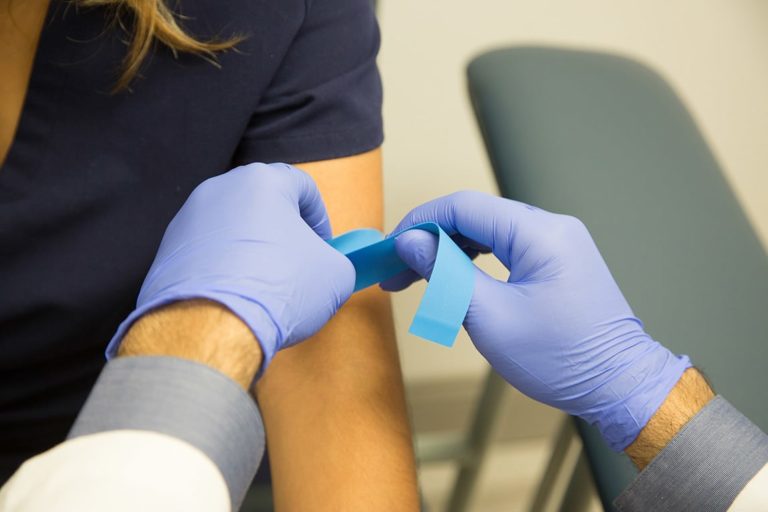The 10-Minute Rule for Northeast Medical Institute - New Haven Campus Phlebotomy Course & Cna Class
The 10-Minute Rule for Northeast Medical Institute - New Haven Campus Phlebotomy Course & Cna Class
Blog Article
The 4-Minute Rule for Northeast Medical Institute - New Haven Campus Phlebotomy Course & Cna Class
Table of ContentsOur Northeast Medical Institute - New Haven Campus Phlebotomy Course & Cna Class DiariesThe 25-Second Trick For Northeast Medical Institute - New Haven Campus Phlebotomy Course & Cna ClassThe smart Trick of Northeast Medical Institute - New Haven Campus Phlebotomy Course & Cna Class That Nobody is DiscussingExcitement About Northeast Medical Institute - New Haven Campus Phlebotomy Course & Cna ClassSome Known Details About Northeast Medical Institute - New Haven Campus Phlebotomy Course & Cna Class The 6-Minute Rule for Northeast Medical Institute - New Haven Campus Phlebotomy Course & Cna Class
Nonetheless, using such tools should be accompanied by other infection prevention and control practices, and training in their use. Not all safety devices are appropriate to phlebotomy. Before choosing a safety-engineered device, users should thoroughly check out available devices to establish their ideal usage, compatibility with existing phlebotomy methods, and effectiveness in securing personnel and clients (12, 33).For settings with reduced resources, price is a driving variable in procurement of safety-engineered tools. Where safety-engineered gadgets are not available, experienced use of a needle and syringe is appropriate.
In the blood-sampling area for an outpatient department or clinic, provide a comfy reclining sofa with an arm remainder.
The smart Trick of Northeast Medical Institute - New Haven Campus Phlebotomy Course & Cna Class That Nobody is Talking About
Guarantee that the signs for blood sampling are plainly specified, either in a written method or in documented guidelines (e.g. in a lab form). In all times, adhere to the strategies for infection avoidance and control listed in Table 2.2. Infection avoidance and control practices. Accumulate all the equipment required for the procedure and location it within safe and simple reach on a tray or cart, making sure that all the things are plainly noticeable.
Where the patient is adult and mindful, adhere to the steps detailed listed below. Introduce yourself to the individual, and ask the person to mention their full name. Examine that the laboratory form matches the client's identification (i.e. match the person's details with the lab type, to make certain accurate identification). Ask whether the patent has allergies, fears or has actually ever before collapsed throughout previous shots or blood draws.
Make the client comfortable in a supine position (if feasible). The individual has a right to decline a test at any kind of time prior to the blood sampling, so it is crucial to guarantee that the individual has understood the treatment - Phlebotomy Classes.
Northeast Medical Institute - New Haven Campus Phlebotomy Course & Cna Class - The Facts
Prolong the person's arm and check the antecubital fossa or lower arm. Locate a blood vessel of a good dimension that is noticeable, straight and clear. The diagram in Area 2.3, reveals common settings of the vessels, yet numerous variants are feasible. The average cubital capillary exists in between muscles and is normally one of the most easy to pierce.
DO NOT insert the needle where capillaries are drawing away, due to the fact that this increases the chance of a haematoma. The capillary must be noticeable without using the tourniquet. Situating the vein will assist in identifying the right dimension of needle. Use the tourniquet concerning 45 finger sizes over the venepuncture website and re-examine the vein.
Haemolysis, contamination and visibility of intravenous liquid and medication can all alter the results (39. Nursing staff and doctors may access central venous lines for specimens following protocols. However, specimens from main lines lug a threat of contamination or wrong research laboratory examination outcomes (https://sitereport.netcraft.com/?url=https://northeastmedicalinstitute.com). It is appropriate, but not ideal, to injure specimens when first visit site presenting an in-dwelling venous gadget, before linking the cannula to the intravenous fluids.
The Best Strategy To Use For Northeast Medical Institute - New Haven Campus Phlebotomy Course & Cna Class
Failing to permit enough contact time increases the risk of contamination. DO NOT touch the cleaned up site; in specific, DO NOT position a finger over the blood vessel to lead the shaft of the revealed needle.
Ask the patient to form a fist so the veins are more popular. Go into the capillary swiftly at a 30 degree angle or much less, and continue to introduce the needle along the blood vessel at the easiest angle of access - PCT Training. Once enough blood has actually been accumulated, release the tourniquet BEFORE withdrawing the needle
The Ultimate Guide To Northeast Medical Institute - New Haven Campus Phlebotomy Course & Cna Class
Withdraw the needle gently and use gentle stress to the website with a tidy gauze or dry cotton-wool round. Ask the client to hold the gauze or cotton woollen in position, with the arm extended and elevated. Ask the client NOT to flex the arm, since doing so creates a haematoma.

Some Known Questions About Northeast Medical Institute - New Haven Campus Phlebotomy Course & Cna Class.
Where feasible, maintain the tubes in a shelf and relocate the rack towards you - https://www.quora.com/profile/Marvin-Gordon-52. If the example tube does not have a rubber stopper, inject incredibly slowly into the tube as minimizing the pressure and rate used to move the sampling minimizes the danger of haemolysis.

Report this page